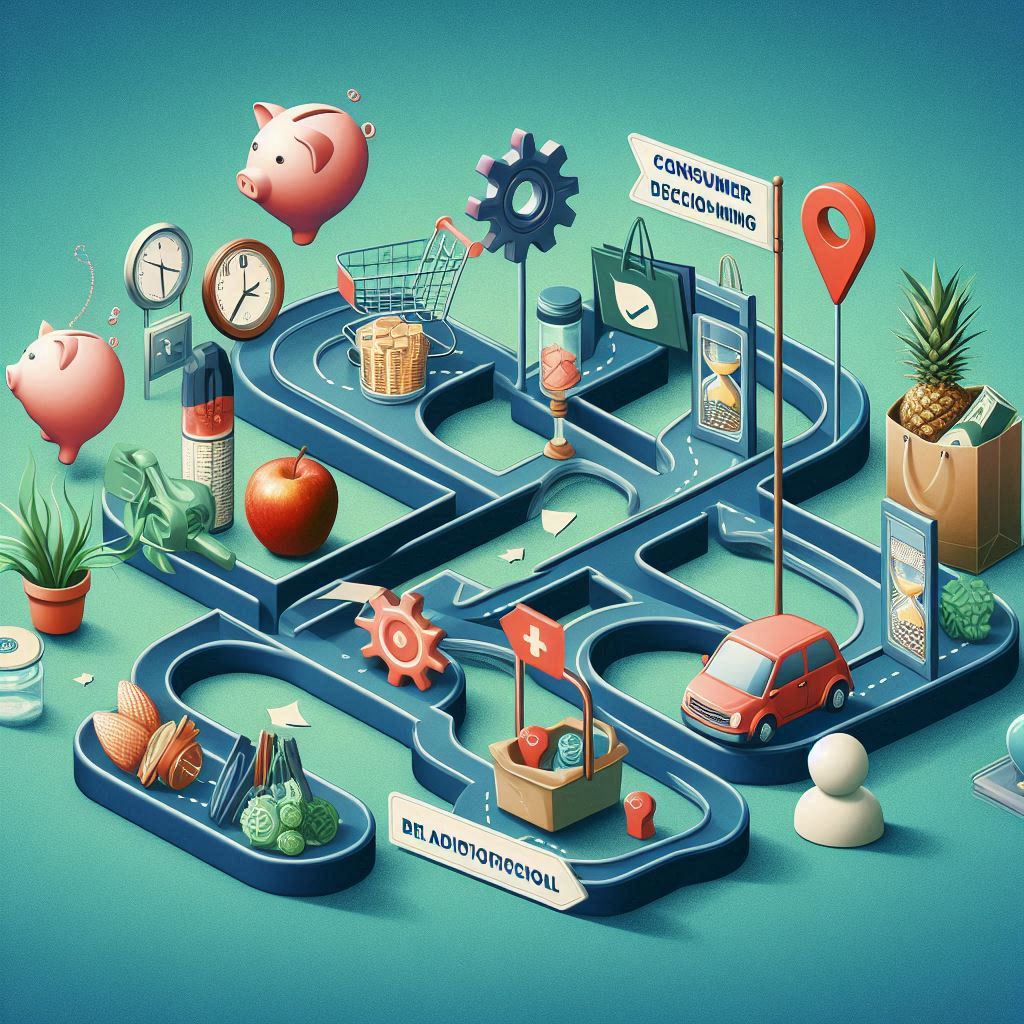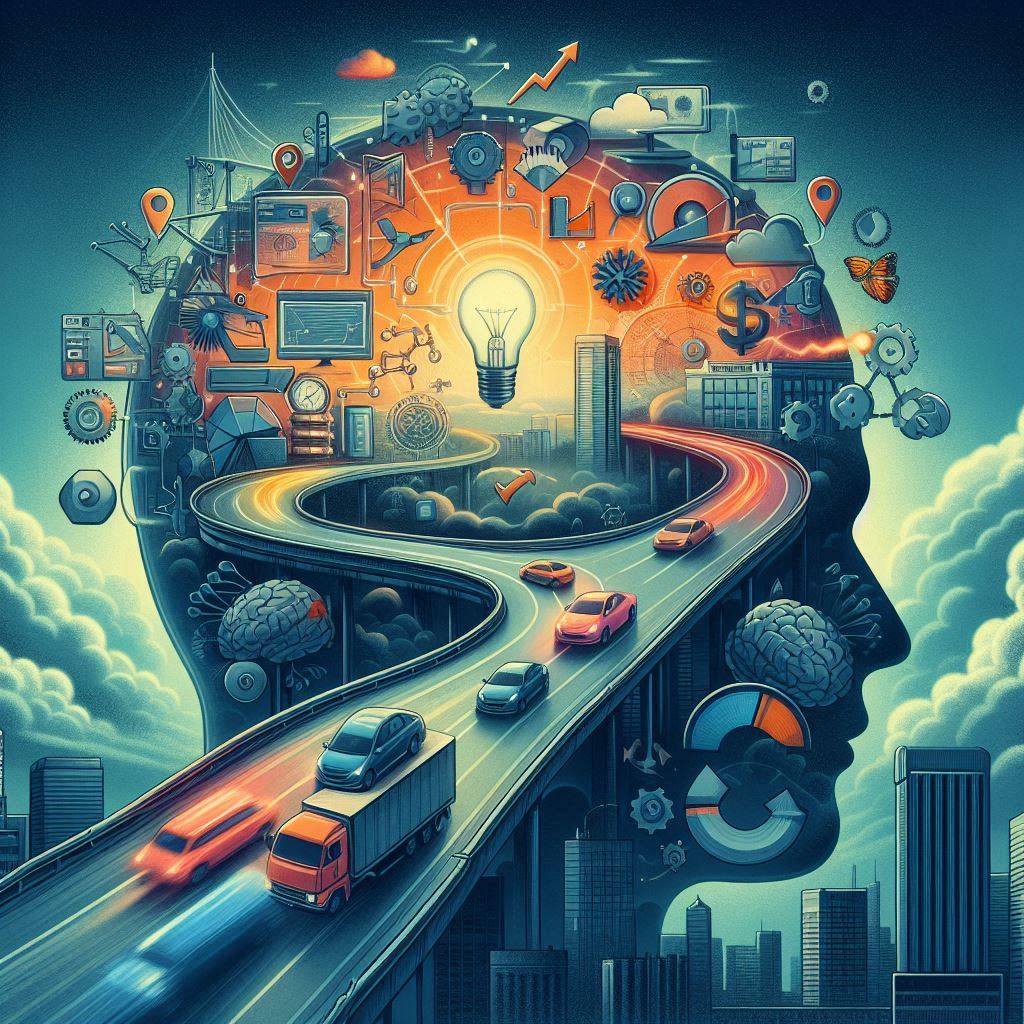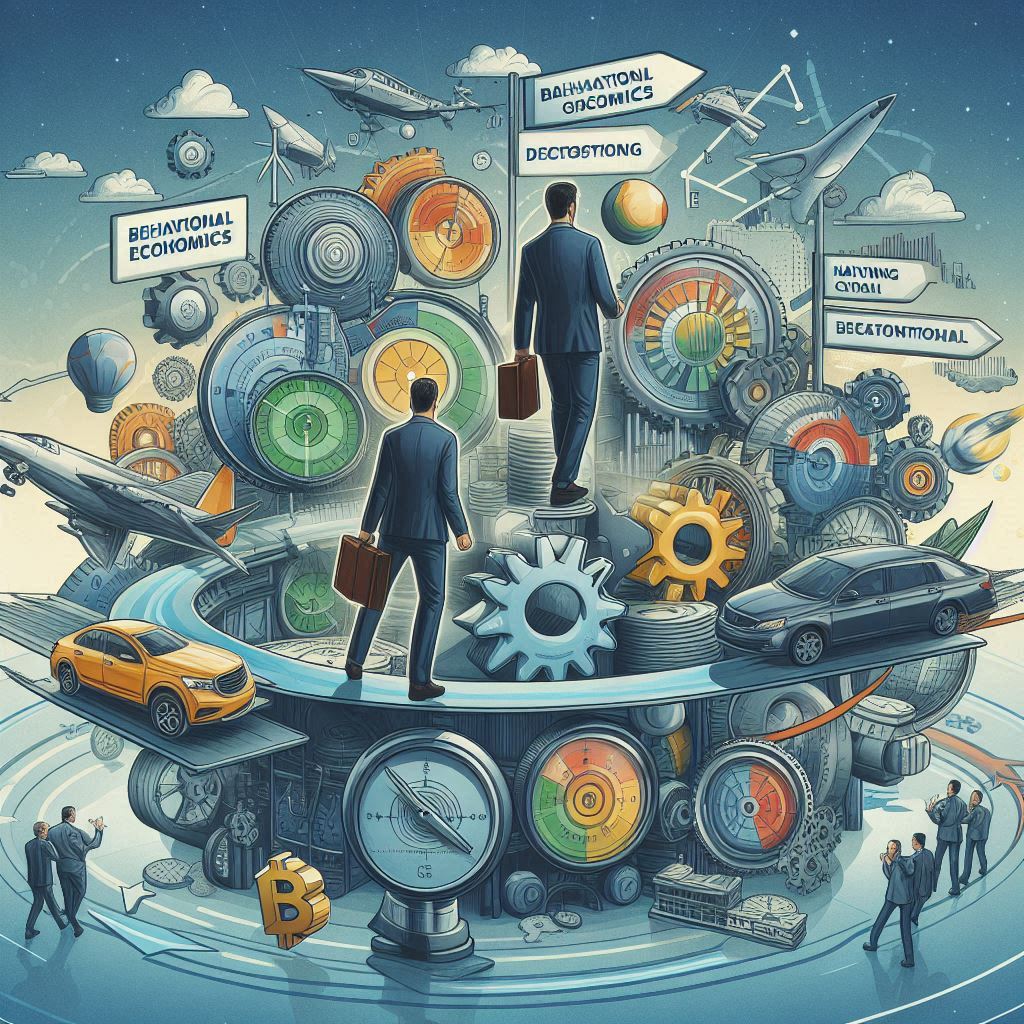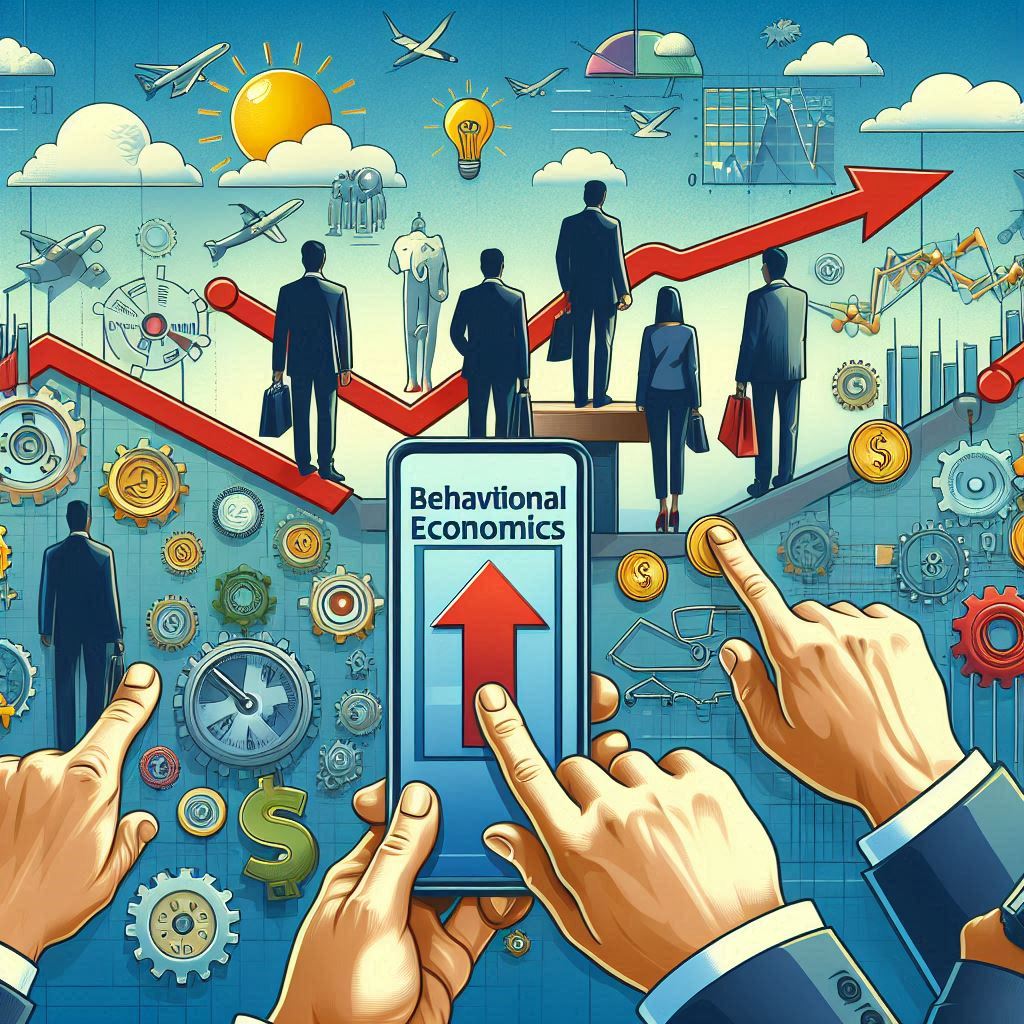In today’s rapidly evolving digital landscape, understanding consumer behavior is crucial for businesses that aim to succeed. Behavioral economics, a discipline that merges insights from psychology, economics, and marketing, offers a profound understanding of how consumers make decisions, particularly in the digital realm. This article will explore the principles of behavioral economics and how they apply to consumer decision-making in a digital context, providing valuable insights for businesses looking to optimize their digital strategies.

The Intersection of Psychology and Economics
Behavioral economics challenges the traditional economic assumption that consumers are fully rational actors who always make decisions based on their best interest. Instead, it suggests that human decision-making is often influenced by cognitive biases, emotions, and social factors, leading to choices that might seem irrational from a purely economic perspective. This understanding is especially relevant in the digital world, where the sheer volume of choices and the brevity of attention spans heighten the impact of these psychological factors.
Cognitive Biases Influencing Online Consumer Behavior
Cognitive biases are systematic patterns of deviation from rationality in judgment, which can lead consumers to make decisions that might not be logically sound. In the context of online consumer behavior, several cognitive biases stand out as particularly influential:
- Anchoring Effect: The anchoring effect occurs when consumers rely heavily on the first piece of information they encounter when making decisions. In an online shopping environment, for instance, the initial price a consumer sees for a product can significantly shape their perception of its value. If a product is initially displayed at a high price, any subsequent discounts can make it appear like a better deal, even if the final price is still higher than what the consumer originally intended to spend.
- Loss Aversion: Loss aversion is a powerful cognitive bias that suggests the pain of losing something is more significant than the pleasure of gaining something of equal value. In the digital marketplace, this can be seen in the effectiveness of limited-time offers and scarcity tactics. When consumers believe that an opportunity might disappear, such as a discount ending soon or a product running out of stock, they are more likely to make a purchase to avoid the perceived loss.
- Social Proof: Humans are inherently social creatures, and their decisions are often influenced by the actions and opinions of others. Social proof, which includes customer reviews, testimonials, and social media endorsements, plays a significant role in online purchasing decisions. Consumers tend to trust the experiences of others, especially when they are uncertain about a product or service, making social proof a critical component of any digital marketing strategy.
Emotions and Decision-Making in the Digital World
Emotions are central to human decision-making, and this is particularly true in the digital space. Online interactions often heighten emotional responses due to their immediacy and the perceived anonymity of the internet. Several key emotional drivers play crucial roles in shaping consumer behavior online:
- Fear of Missing Out (FOMO): FOMO is a powerful emotional response that can drive impulsive purchasing decisions. In the digital world, FOMO is often triggered by time-sensitive offers, exclusive deals, or notifications about what others are buying or viewing. This fear of missing out on a good deal or an exclusive product can lead consumers to make purchases they might otherwise have delayed or reconsidered.
- Trust and Security: In an era where data breaches and online fraud are prevalent, trust has become a critical factor in consumer decision-making. Consumers are increasingly cautious about where they spend their money online, placing high importance on the perceived security of websites and the transparency of businesses. Features such as secure payment options, clear privacy policies, and visible customer support channels can significantly enhance consumer trust and encourage purchases.
- Hedonic Adaptation: Hedonic adaptation refers to the phenomenon where people quickly return to a baseline level of happiness following positive or negative events. In the context of consumer behavior, this means that the initial excitement of a purchase can quickly fade, leading consumers to seek out new products or experiences. Businesses can counteract this by continuously engaging consumers with new offers, updates, or rewards that maintain their interest and satisfaction over time.

The Role of Digital Choice Architecture
Choice architecture refers to the way in which options are presented to consumers. In the digital environment, the design and layout of websites, apps, and other online platforms can have a profound impact on how consumers make decisions. Effective choice architecture can guide consumers toward making decisions that are beneficial for both the business and the consumer.
Default Options and Consumer Behavior
One of the most influential tools in digital choice architecture is the use of default options. Defaults are pre-selected choices that take effect if the consumer does not actively make a different selection. Research has shown that consumers are more likely to stick with default options, especially in situations where they feel uncertain or indifferent about the alternatives.
For example, subscription services often use default auto-renewal settings, which can lead to higher retention rates. Consumers may not opt out of auto-renewal simply because it requires additional effort, even if they are not entirely committed to the service. By strategically designing default options, businesses can nudge consumers toward choices that increase customer retention and lifetime value.
The Paradox of Choice
While offering a wide range of options may seem like a good idea, it can sometimes lead to what is known as decision paralysis. The paradox of choice occurs when consumers are overwhelmed by too many options, making it difficult for them to make a decision at all. This can lead to frustration and, ultimately, a lost sale.
To mitigate this effect, businesses can simplify the decision-making process by categorizing options clearly, offering curated selections, or highlighting bestsellers. By reducing the cognitive load on consumers, businesses can make it easier for them to make a choice and complete a purchase.
Visual Layout and Consumer Pathways
The visual presentation of information—such as the use of color, font size, and the placement of elements on a webpage—can significantly influence consumer behavior. For instance, placing premium products at eye level, using contrasting colors for call-to-action buttons, or designing a streamlined checkout process can all guide consumers toward making decisions that align with business goals.
Effective visual layout can also enhance the overall user experience, making it more likely that consumers will return to the site in the future. Attention to detail in design can improve navigation, reduce friction points, and ultimately lead to higher conversion rates.
Behavioral Economics Strategies for Digital Marketing
Applying behavioral economics principles to digital marketing strategies can yield significant benefits in terms of consumer engagement and conversion rates. By understanding how consumers think and what drives their decisions, businesses can craft more effective marketing campaigns that resonate with their target audience.

Personalized Recommendations and Consumer Preferences
Personalization is a powerful tool in digital marketing, and it leverages the cognitive bias of perceived uniqueness, where consumers feel valued and understood when they receive personalized recommendations. By analyzing past behavior, preferences, and purchase history, businesses can deliver tailored content, product suggestions, and offers that are more likely to meet the individual needs and desires of consumers.
Personalization not only increases the relevance of the marketing message but also enhances the overall user experience. Consumers are more likely to engage with content that feels personally relevant to them, leading to higher conversion rates and greater customer loyalty.
Social Proof and User-Generated Content
Social proof is one of the most effective strategies in digital marketing. When consumers see that others have had positive experiences with a product or service, they are more likely to trust the brand and make a purchase themselves. User-generated content, such as reviews, testimonials, and social media posts, adds an authentic voice to marketing efforts and can significantly influence consumer behavior.
Highlighting social proof on product pages, in marketing emails, and across social media platforms can reduce consumer uncertainty and build trust. This, in turn, leads to higher conversion rates and can help differentiate a brand in a crowded marketplace.
Scarcity and Urgency Tactics
Scarcity and urgency are two psychological triggers that can drive immediate action. When consumers perceive that a product is scarce or that an offer is available for a limited time, they are more likely to make a purchase to avoid missing out. These tactics can be particularly effective in digital marketing, where consumers often make quick decisions based on limited information.
Implementing scarcity and urgency tactics, such as displaying low stock levels, using countdown timers, or offering limited-time discounts, can create a sense of urgency that motivates consumers to act quickly. This can help reduce cart abandonment rates and increase overall sales.
Conclusion: Harnessing Behavioral Economics in the Digital Era
In conclusion, behavioral economics provides a comprehensive framework for understanding and influencing consumer behavior in the digital age. By recognizing the cognitive biases, emotional drivers, and decision-making processes that shape online consumer behavior, businesses can design more effective digital strategies that resonate with their target audience.

Whether through the strategic use of choice architecture, personalized marketing, or leveraging social proof, the application of behavioral economics principles can lead to more informed, efficient, and satisfying consumer interactions online. In an increasingly competitive digital marketplace, businesses that understand and apply these insights will be better positioned to attract, engage, and retain customers, ultimately driving greater success.
As the digital landscape continues to evolve, staying ahead of consumer behavior trends will require a deep understanding of the psychological factors at play. By integrating the principles of behavioral economics into your digital strategy, you can create a more compelling value proposition, build stronger relationships with consumers, and achieve long-term success in the dynamic world of online business.

